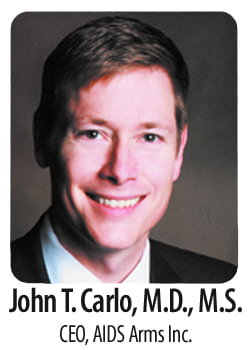
What is the first question that came to your mind when you found out that Charlie Sheen is HIV-positive?
Was it, “So how’d he get it?”
We probably want to know how Sheen was infected so we can better understand how we feel about him. And by the way, this is OK. Everyone’s feelings are their own.
But it is important to understand why we felt the need to know this in the first place.
 As human beings, we all carry with us a primal fear of infectious diseases. Sometimes, it is very apparent, such as what we saw during last year’s Ebola crisis here in Dallas. Other times, especially when we are dealing with HIV, it is less obvious, but definitely still there.
As human beings, we all carry with us a primal fear of infectious diseases. Sometimes, it is very apparent, such as what we saw during last year’s Ebola crisis here in Dallas. Other times, especially when we are dealing with HIV, it is less obvious, but definitely still there.
Let’s start with why we all carry this primal fear in the first place. Looking back at our ancestors, it makes total sense for us to have instinct guiding us to avoid sick people. There is also another primal instinct from our ancestors — the need to stereotype people as either friend or foe.
We still carry these primal fears; however, today they are not always rational or necessary.
Knowing how Charlie Sheen got infected is a way for us to dispel some of our fears. Putting him in a category — “Oh he is gay, he shared needles, or he had lots of sex” — makes it easier for us to understand him and satisfies the instinct to stereotype. So it is perfectly normal to want to know how Charlie Sheen got infected.
What is not fine is judging someone or treating them differently based on whether are they living with an infectious disease.
This is a great time to remind ourselves how important it is for everyone to know their HIV status, and for everyone to recognize that stigma still exists both inside the gay community and out. Primal fears continue to drive this stigma, and without addressing this core issue, we are not going to make further progress towards ending the HIV epidemic.
This article appeared in the Dallas Voice print edition November 20, 2015.
The primal need to know: How was Charlie Sheen infected?


